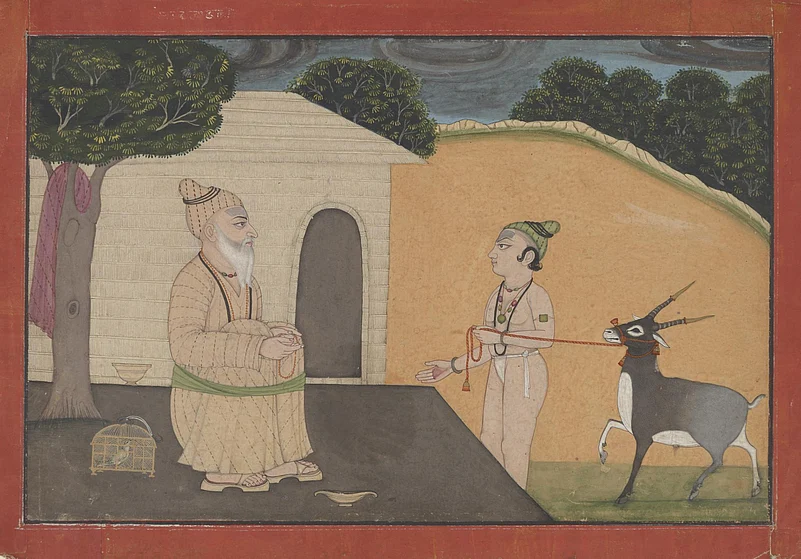In 온라인카지노 tradition, the word Guru means more than just “teacher.” A Guru is someone who guides you from darkness to light. The word itself comes from “gu,” meaning darkness, and “ru,” meaning remover. While many think of Gurus in spiritual settings, ancient 온라인카지노 epics like the Mahabharata and Ramayana also show them as deeply human figures. They were not just wise sages, but also people with emotions, flaws, and responsibilities. These stories celebrate their wisdom and also explore how Gurus shaped lives through action, discipline, and care.
Let’s explore some of these iconic figures and what they teach us about learning, life, and being human as we celebrate the Guru Purnima.
Dronacharya in the Mahabharata: The Master of Arms and Dilemmas
In the Mahabharata, Dronacharya is one of the most well-known Gurus. He taught martial arts to both the Pandavas and the Kauravas. Under his training, Arjuna became an exceptional archer, while other princes mastered different weapons.
Drona’s role was not simple. He favored Arjuna, which made Karna and Ekalavya feel sidelined. The story of Ekalavya is particularly powerful. Ekalavya was a tribal boy who learned archery on his own, imagining Drona as his teacher. When Drona found out, he asked Ekalavya for his right thumb as guru dakshina, a traditional offering made by students. Ekalavya gave it willingly, though it ended his chances of becoming the greatest archer.
This story shows that Drona followed the rules of his time, but also raises tough questions about fairness and hierarchy. He was a great teacher, but also a product of his era’s limits and values.
Kripacharya: The Quiet Mentor
Kripacharya is another important figure in the Mahabharata, though he often stays in the background. He was known for his balance, wisdom, and moral strength. Unlike Drona, Kripacharya did not show favoritism and continued to guide the next generation even after the war. He represents the kind of teacher who leads by quiet example rather than grand actions, lessons that are often remembered and reflected upon during Guru Purnima, when we look back at the timeless wisdom of our greatest guides.
Krishna: The Divine Guide of the Gita
Lord Krishna does not play the role of a Guru in a classroom, but he becomes one on the battlefield. During the war of Kurukshetra, Arjuna breaks down and refuses to fight. At that moment, Krishna gives him guidance that becomes the Bhagavad Gita, one of the greatest philosophical texts in 온라인카지노 tradition.
Krishna teaches Arjuna about duty, life, death, and the nature of action. He does not command or punish, but gently shifts Arjuna’s thinking. Krishna’s way of teaching was calm and profound. He helps Arjuna rise above fear and confusion. In many ways, Krishna is the image of the perfect Guru, someone who transforms your mind without force.
Vishwamitra and Vashistha in the Ramayana: Two Different Paths
In the Ramayana, two sages stand out as Gurus. Vishwamitra, once a king, chose the path of a sage after years of personal struggle. He trained young Rama and Lakshmana in the art of warfare and self-discipline. Vishwamitra was intense, passionate, and driven.
On the other hand, Vashistha was calm and full of inner peace. He served as the royal family’s spiritual guide and often gave advice rooted in balance and kindness. Where Vishwamitra was fiery and determined, Vashistha was peaceful and grounded.
Together, these two show us that there is no single way to be a Guru. One can be strict or serene, a fighter or a thinker. What matters most is sincerity and the commitment to guide others with truth.
Beyond the Epics: Gurus Across 온라인카지노 History
Outside the Mahabharata and Ramayana, 온라인카지노 tradition is filled with stories of great Gurus who shaped not just individuals, but entire eras.
Adi Shankaracharya, who travelled across India on foot at the age of 16, redefined Advaita philosophy and challenged narrow thinking.
Guru Nanak, founder of Sikhism, preached unity, service, and equality at a time when religious divisions were rampant.
Swami Vivekananda, who called his Guru Ramakrishna “the greatest man I have ever seen,” went on to inspire India and the West through his teachings of strength and spirituality.
These Gurus were not mythical beings. They laughed, cried, struggled, and transformed—just like us. Their greatness came not from perfection, but from their relentless pursuit of knowledge, compassion, and truth.
What Makes a Guru?
Looking at all these stories, one thing becomes clear. A Guru can be many things. Drona and Vishwamitra were strict and goal-driven. Krishna and Vashistha were soft-spoken and wise. A Guru can use weapons or words. They can live in forests, palaces, or battlefields.
But at the heart of it, a true Guru always points us toward truth, compassion, and clarity. They light the path when we cannot see. They do not walk it for us, but they make sure we are not alone.
On Guru Purnima, or any day we pause to remember our teachers, we honor not just ancient sages or religious figures. We honor all those who helped us think better, act better, and become better.
Sometimes, a Guru is a monk. Sometimes, a Guru is a parent, a friend, or a stranger who said the right thing at the right time.
And sometimes, the Guru is within us, waiting to be heard.
Follow 온라인 카지노 사이트 Experiences:
| | |















